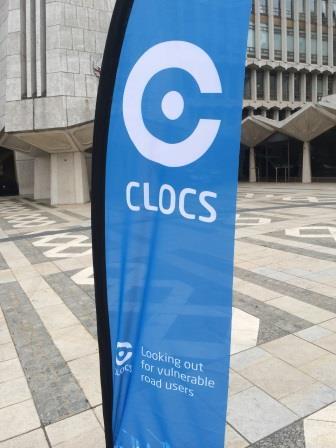
Last month’s meeting of the Construction Logistics and Cyclist Safety (Clocs) working group laid bare a shift in the emphasis around efforts to make roads safer for vulnerable users, while keeping the wheels of the road transport industry turning.
Held at London’s Guildlhall the event, the third meeting of Clocs since the initial report in May of last year followed by December’s launch of the Standard for construction logistics: managing work related road, was a who’s who of the construction logistics sector.
With around 70 organisations now in Clocs membership (and Clocs now existing as its own brand at clocs.org.uk and on Mace building sites) it was also clear that while Clocs was born out of Transport for London’s (TfL) reaction to a London problem, this is now a national response.
Attendes included Cemex, Conway, Lafarge Tarmac, Laing O’Rourke, Costain, Carillion, O’Donovan and Skanska.
Speaking at the event, Dylan Roberts, director of health and safety at Skanska UK agreed with Scania's take on vehcicle design and striking a balance, and added that while vehicle standards/ design was a relatively easy issue to sell to people as it’s tangible, “working on the psychology of the people that actually driver these vehicles (especially outside of London) is more challenging.”
Roberts said the company’s approach to achieving buy-in from its workforce had been to fully support the Driver CPC and use it along with a focus on vulnerable road users as a national standard, as well as “showing drivers respect in the face of a tough job”.
On the subject of cyclist behaviour he said: “Educating vulnerable road users remains perhaps the biggest challenge. But it is also our biggest opportunity (as an industry). It means educating people about the consequence of jumping a red light, which we’ll continue to do by supporting schemes such as Exchanging Places”.
There was a host of other news at the conference including:
• The Transport Research Laboratory has now gone live on a project to evaluate the effectiveness of the plethora of cyclist safety equipment now on the market, ultimately in real world conditions. Six electronic devices (not mirrors or those that solely warn the vehicle’s driver) are now being tested, with live tests now underway and results are due later this year.
• Mercedes-Benz estimated that only 5% of its off road equipped vehicles are actually put through their paces and used in the conditions they were designed to handle by customers
• Later this year Mercedes-Benz is set to launch a four-axle 32-tonne Econic tipper that should deliver close to a 20-tonne payload (Scania, Volvo & Dennis Eagle also have a low cab propositions).
• The Clocs delegation engaging with manufactures over vehicle design comprises: Laing O’Rourke, DHL, Lafarge Tarmac, Cemex, Conway, O’Donovan, Sig UK, Hanson, Riney (and City of London).
• Manufacturers engaged with Clocs over vehicle design comprise: Scania, Mercedes-Benz, Volvo, Dennis Eagle, Man, Renault Trucks, and Daf.
• Larfarge Tarmac was awarded whole fleet accreditation for Bronze Fors at the event.
• The Clocs standard unifies 11 separate standards affecting construction logistics hauliers across London into one











